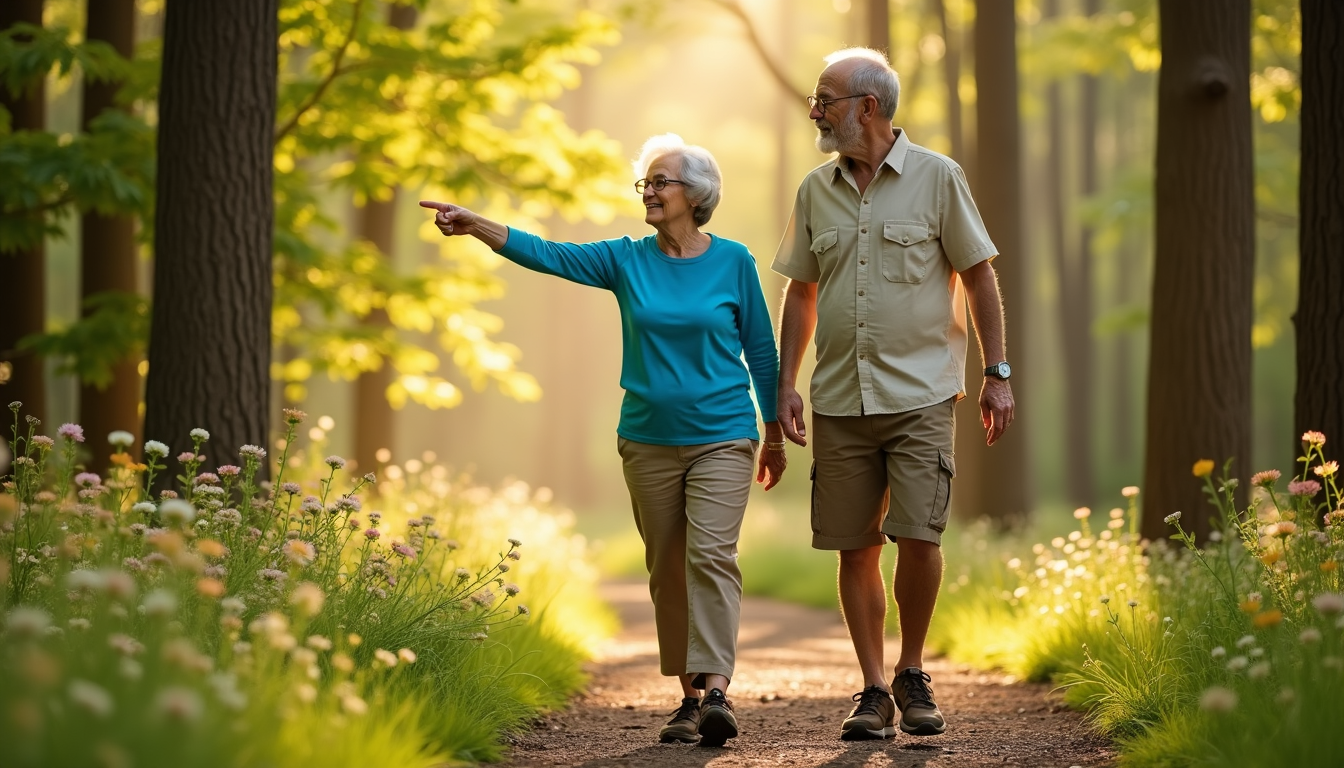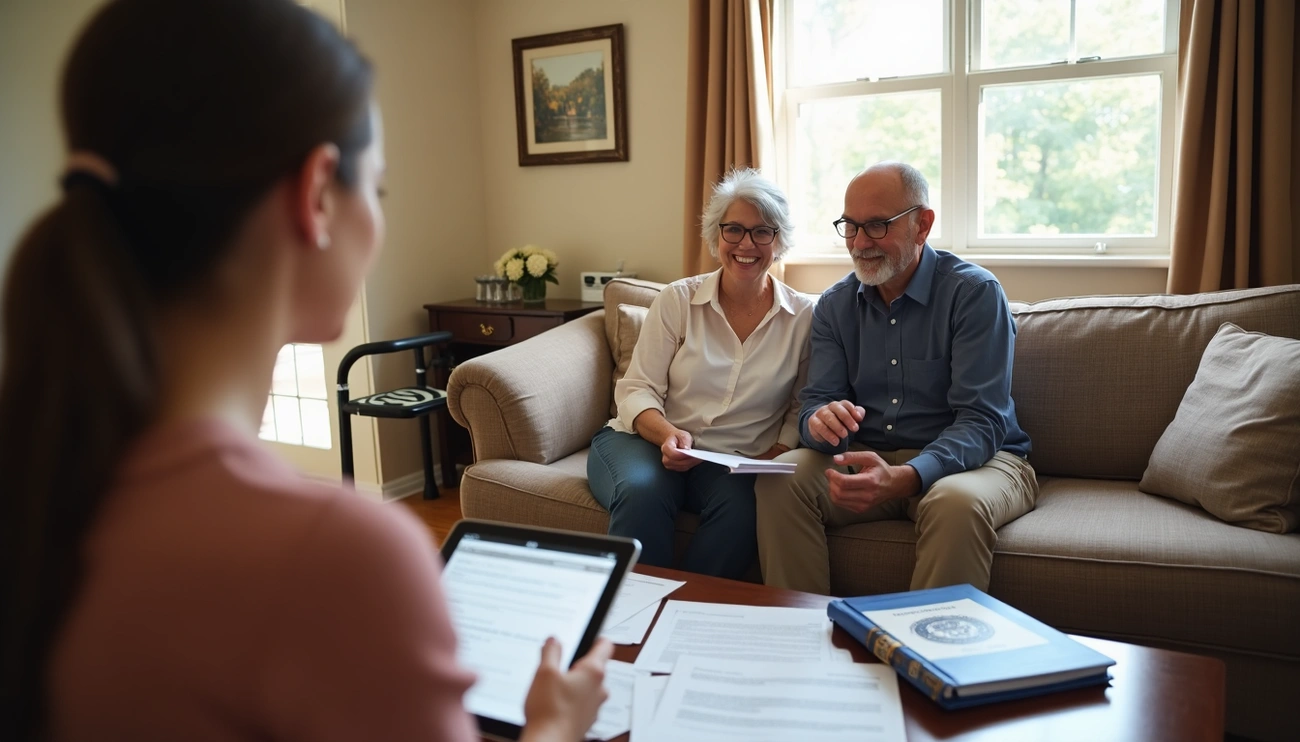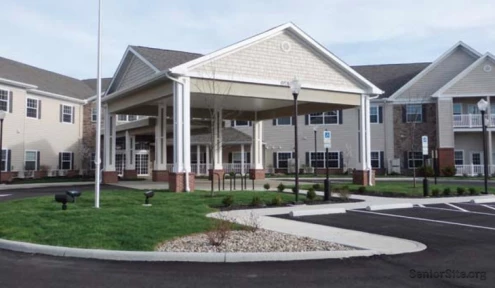Science reveals a fascinating connection between nature and memory: spending time outdoors can significantly boost cognitive function in seniors. According to research, outdoor activities for seniors offer more than just fresh air – they provide crucial benefits for brain health and memory retention.
In fact, when older adults engage in outdoor activities, they experience multiple cognitive advantages. These activities reduce stress levels, improve cardiovascular health, and enhance overall mental well-being. Additionally, seniors who participate in nature-based activities like gardening or walking show measurable improvements in memory function, while experiencing lower depression and anxiety levels.
We’ll explore the scientific evidence behind how outdoor activities benefit senior memory, from brain chemistry changes to physical activity benefits. Our comprehensive guide will help you understand why stepping outside could be the key to maintaining sharp cognitive function as we age.
How Nature Exposure Changes Brain Chemistry in Seniors
For seniors, time spent in green spaces fundamentally alters brain chemistry through multiple pathways. Research confirms that nature exposure creates measurable changes in key brain regions crucial for memory and emotional well-being.
The hippocampus and memory formation
The hippocampus—essential for memory formation—undergoes structural and functional changes during aging that affect memory performance. Remarkably, even brief interactions with natural environments appear to counteract these changes. One study found that participants who walked in forests experienced an increase in subiculum volume (a hippocampal subfield involved in stress response inhibition), while urban walkers showed no comparable changes.
Environmental factors around seniors’ homes also influence brain structure. Research has identified green space exposure, pollution levels, and environmental noise as critical factors linked to hippocampal volume across adulthood. Furthermore, these associations remain significant even when considering other established brain health predictors.
Essentially, natural environments provide a form of environmental enrichment for older adults, similar to enrichment that has shown cognitive benefits in animal studies. This environmental stimulation helps maintain hippocampal integrity as we age.
Stress reduction and cortisol levels
Nature exposure dramatically affects stress hormone production in seniors. Studies prove that spending just 20-30 minutes in nature produces the most significant drops in cortisol levels. After this initial period, additional stress-reduction benefits continue to accrue, albeit more slowly.
Natural settings activate the parasympathetic nervous system—responsible for rest and relaxation—helping to bring the body back into balance. Research comparing visitors to natural versus urban environments found:
- Significantly lower cortisol levels after visiting natural settings
- Reduced activity in the amygdala (brain’s fear center) after 60-minute nature walks
- Decreased blood flow in the prefrontal cortex, correlating with fewer negative thought cycles
Natural light and circadian rhythm regulation
Sunlight exposure through outdoor activities for seniors plays a critical role in maintaining proper circadian rhythms. As people age, the suprachiasmatic nucleus (where the biological clock resides) shows reduced neuronal activity. Moreover, aging eyes have reduced optical transmission, particularly of short wavelengths crucial for circadian entrainment.
Morning exposure to natural light during outdoor activities for older adults helps regulate these biological rhythms. Without regular light-dark patterns, circadian rhythms become irregular, contributing to sleep problems common in seniors. Consequently, proper light exposure through outdoor activities provides natural light therapy that can improve sleep quality and cognitive function.
Research indicates natural light stimulates serotonin production—a neurotransmitter contributing to feelings of well-being. Therefore, regular outdoor activities for elderly individuals offers a simple yet powerful intervention for maintaining brain health.
Physical Activity Outdoors and Cognitive Function
Physical activity directly impacts brain function in seniors, with regular movement creating powerful cognitive benefits. Research shows these effects are even more pronounced when exercise happens outdoors.
Increased blood flow to the brain
Exercise triggers immediate improvements in cerebral circulation for older adults. A groundbreaking UT Southwestern study demonstrated that when seniors with mild memory loss followed an exercise program for a year, blood flow to their brains measurably increased. This improved circulation delivers more oxygen and nutrients to brain cells.
Notably, aerobic activities reduce central arterial stiffness in older adults, which directly influences cerebral blood flow. As arteries become more flexible, blood moves more efficiently through the brain’s vascular system. Research reveals a potential “dose-response” relationship – the more seniors improve their cardiorespiratory fitness, the greater the increases in cerebral blood flow and the larger the decreases in cerebrovascular resistance.
Exercise-induced neurogenesis
Exercise stimulates the production of new brain cells, even in older adults. This process, called neurogenesis, occurs primarily in the hippocampus – the brain region central to learning and memory. Physical activity promotes the release of growth factors like BDNF (brain-derived neurotrophic factor), which support neuron growth and survival.
Studies confirm that exercise enhances synaptic plasticity – the brain’s ability to form new connections – which serves as the foundation for memory formation and retention. Physical activity simultaneously improves mitochondrial health in neurons, reducing oxidative stress and boosting energy production.
The unique benefits of green exercise vs. indoor workouts
Outdoor activities for seniors provide cognitive advantages beyond those of indoor exercise. A compelling study found that a mere 15-minute walk outside improved attention and working memory performance compared to an identical indoor walk. Reaction times were faster following outdoor walks, with researchers detecting measurable changes in the P300 brain wave, a neural response associated with attention.
For older adults with mild cognitive impairment, a 12-week comparison of outdoor versus indoor aerobic exercise found that the outdoor group showed significantly better scores in executive functions like set shifting and response inhibition. This supports the “attention restoration theory” – natural environments reduce mental fatigue by providing a sense of being away from routine and inducing soft fascination rather than demanding attention.
Sensory Stimulation in Nature and Memory Pathways
Nature provides a rich sensory feast for older brains, offering more than just visual pleasure. The multi-sensory stimulation from outdoor environments actively rewires neural pathways critical for memory retention and cognitive health.
Multi-sensory engagement strengthens neural connections
Unlike indoor environments, nature simultaneously activates multiple senses—hearing birds sing, feeling the breeze, smelling flowering plants—creating deeper, more meaningful learning experiences. This multi-sensory stimulation has been found to improve both memory retention and attention in seniors. Actually, seniors exposed to multi-sensory natural environments demonstrate measurable improvements in cognitive function, with one study showing a statistically significant increase of 0.87 in Mini-Mental State Examination scores after participation in therapeutic horticulture programs.
Furthermore, multi-sensory experiences help seniors maintain cognitive abilities by stimulating neuroplasticity—the brain’s ability to form new connections throughout life. Research indicates that engaging multiple senses at once may produce additive beneficial effects, beyond what single-sense stimulation provides.
Novel environments and cognitive mapping
Seniors retain the ability to create mental maps of new environments despite aging. Studies demonstrate that older adults accurately reproduce the layouts of novel environments after sufficient exposure, suggesting that spatial memory for environmental layouts remains relatively preserved with age.
Nevertheless, research reveals differences in how these cognitive maps function—older adults might map an environment accurately yet struggle to remember specific locations within it. In effect, environmental exploration creates rich neural networks by activating unique brain pathways involved in spatial navigation and memory encoding.
How natural settings reduce attention fatigue
Attention Restoration Theory explains how natural environments uniquely refresh mental resources. According to this theory, nature provides four key restorative elements:
- Being away: Providing escape from routine mental activities
- Soft fascination: Capturing attention effortlessly without mental strain
- Extent: Creating a sense of immersion in another world
- Compatibility: Aligning with natural human preferences
Evidence supports this theory; in one study, older adults viewing nature pictures for just six minutes showed improved executive attention compared to those viewing urban scenes. Such short exposures helped seniors maintain healthy sleep patterns and psychological wellbeing.
Simply put, outdoor activities for elderly individuals offer a powerful prescription for cognitive health by reducing mental fatigue that accumulates from directed attention in everyday tasks.
Research Studies on Outdoor Activities and Senior Memory
Compelling scientific evidence from multiple longitudinal studies confirms that outdoor activities yield measurable cognitive benefits for seniors. Researchers have systematically documented how nature engagement preserves and enhances memory function throughout the aging process.
Key findings from longitudinal studies
Longitudinal research reveals bidirectional relationships between outdoor activities and cognitive health. Studies conducted with Chinese older adults found that participants with better cognitive function were more likely to engage in outdoor activities in subsequent years, while higher outdoor engagement predicted better cognitive outcomes in following evaluations. Indeed, this creates a positive cycle where cognitive health and outdoor activity mutually reinforce each other.
Research spanning seven years discovered that greater green space coverage is associated with slower cognitive decline, with a 1% increase in green coverage reducing cognitive decline rates by 0.01 points. Similarly, studies examining the frequency of outdoor engagement found that seniors who went outdoors more than four times weekly maintained significantly better intellectual activity compared to those venturing outside less than once weekly.
Measurable improvements in recall and recognition
Therapeutic horticulture programs demonstrate remarkable cognitive benefits. One 24-session program resulted in statistically significant improvements in Mini-Mental State Examination scores, with participants gaining an average increase of 0.87 points. The cognitive enhancements from these interventions lasted up to six months after program completion.
Memory-specific improvements appear strongest for emotional memory consolidation. Research indicates that moderate physical activity outdoors enhances sleep-dependent consolidation of emotional memories in older adults. Interestingly, seniors showed specific improvements in recognition memory tasks after nature-based interventions, though free recall tasks showed more variable results.
How frequency and duration affect outcomes
The “dose” of outdoor exposure significantly impacts cognitive benefits. Studies indicate that replacing just 30 minutes of sedentary time with moderate physical activity outdoors yields significant improvements in memory consolidation. For instance, substituting 30 minutes of non-active time with outdoor moderate physical activity resulted in measurable memory benefits for older adults at risk of cognitive decline.
Activity frequency proves equally crucial as duration. Research demonstrates that seniors going outdoors more than four times weekly showed significantly better functional capacity (p=.0201) and intellectual activities (p=.0026) compared to less frequent participants. Beyond these cognitive benefits, frequent outdoor engagement improved self-efficacy for both daily activities (p=.0067) and health promotion (p=.0245).
Conclusion
Science clearly demonstrates that outdoor activities offer powerful cognitive benefits for seniors. Natural environments create measurable changes in brain chemistry, boost memory formation, and reduce stress levels through multiple pathways. These benefits become especially significant when combined with physical activity, which increases blood flow to the brain and stimulates the growth of new neural connections.
The evidence speaks for itself – seniors who regularly participate in outdoor activities show better cognitive performance and slower rates of memory decline. Rather than viewing outdoor time as optional, we should consider it essential for maintaining brain health as we age. Simple activities like daily nature walks or gardening can make a remarkable difference in memory function and overall cognitive well-being.
Research proves that even brief periods outdoors – as little as 20-30 minutes – can trigger positive changes in brain chemistry. Seniors who spend time in nature four or more times weekly demonstrate significantly better intellectual activity and memory retention than those who rarely venture outside. These findings emphasize that consistent outdoor engagement serves as a practical, accessible way to support cognitive health throughout the aging process.
FAQs
Q1. How does spending time outdoors benefit seniors’ memory? Outdoor activities boost seniors’ memory by increasing blood flow to the brain, reducing stress levels, and stimulating the growth of new neural connections. Nature exposure also helps regulate circadian rhythms and provides multi-sensory stimulation, which strengthens memory pathways.
Q2. What types of outdoor activities are most beneficial for senior cognitive health? Activities like walking in nature, gardening, and engaging in green exercise (physical activity in natural environments) are particularly beneficial. These activities combine the cognitive benefits of nature exposure with the physical advantages of exercise, leading to improved memory and overall brain function.
Q3. How much time should seniors spend outdoors to see cognitive benefits? Research suggests that even 20-30 minutes of outdoor time can produce significant benefits. However, more frequent engagement (four or more times per week) has been shown to result in better cognitive outcomes. Consistency is key for maintaining and improving memory function.
Q4. Can outdoor activities help seniors with existing memory issues? Yes, studies have shown that outdoor activities can benefit seniors with mild cognitive impairment or memory loss. Therapeutic horticulture programs, for instance, have resulted in measurable improvements in cognitive test scores, with benefits lasting up to six months after the program’s completion.
Q5. Are there any specific memory improvements associated with outdoor activities for seniors? Outdoor activities have been linked to improvements in various aspects of memory, including emotional memory consolidation and recognition memory. Seniors engaging in regular outdoor activities have shown better performance in cognitive tests, slower rates of memory decline, and enhanced ability to form and retain new memories.












